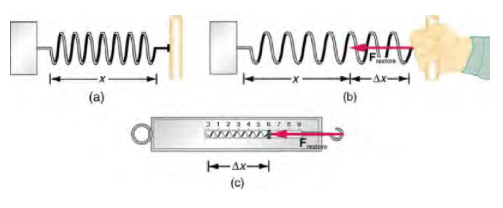| << Chapter < Page | Chapter >> Page > |
By the end of this section, you will be able to:
The Learning Objectives in this section will help your students master the following TEKS:
[BL] [OL] Point out that objects at rest tend to stay at rest. A ball, for example, moves only when pushed or pulled. The action of pushing or pulling is the application of force. Force applied to an object changes its motion.
[AL] Start a discussion about force and motion. Ask students what would happen if more than one force is applied to an object. Take a heavy object such as a desk for demonstration. Ask one student to push it from one side. Explain how force and motion work. Now ask a second student to push it in the opposite direction. Ask students why no motion occurs even though the first student applies the same amount of force. Introduce the concept of adding forces.
| dynamics | external force | force |
| free body diagram | net external force | net force |
[OL] Explain that the word dynamics comes from a Greek word meaning power. Also point out that the word “dynamics” is singular, like the word “physics.”
[BL]
[OL] You may want to introduce the terms system, external force, and internal force.
[AL] Explain that both magnitude and direction must be considered when talking about forces.

Force is the cause of motion, and motion draws our attention. Motion itself can be beautiful, such as a dolphin jumping out of the water, the flight of a bird, or the orbit of a satellite. The study of motion is called kinematics, but kinematics only describes the way objects move—their velocity and their acceleration. Dynamics considers the forces that affect the motion of moving objects and systems. Newton’s laws of motion are the foundation of dynamics. These laws describe the way that objects speed up, slow down, stay in motion, and interact with other objects. They are also universal laws in that they apply everywhere on Earth as well as in space.
A force pushes or pulls an object. The object being moved by a force could be an inanimate object such as a table, or an animate object such as a person. The pushing or pulling may be done by a person, or even the gravitational pull of the earth. Forces have different magnitudes and directions; this means that some forces are stronger than others and can point in different directions. For example, a cannon exerts a strong force on the cannonball that is launched into the air. In contrast, a mosquito landing on your arm exerts only a small force on your arm.

Notification Switch
Would you like to follow the 'Updated tutor hs physics content - legacy' conversation and receive update notifications?